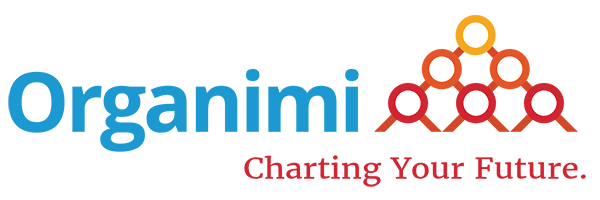Organimi’s Guide to the Best Project Management Tools
To define project management, we first need to define what a project is. Anything that has a start and an end and produces a deliverable is a project. Project management, therefore, is the way that the project is planned, monitored, carried out, and controlled—the way it is managed.
Indeed, project management is quite a broad term that covers a myriad of related areas and disciplines, including resource management, risk analysis, scheduling, planning, and talent sourcing.
The person who’s responsible for overseeing all of this is the project manager. They develop the plans, assemble the project’s team, and report back to the stakeholders until a quality deliverable is produced. This is often done with the help of project management tools and software.
What Are Project Management Tools?
Project management tools (or project management software) help project managers to plan, monitor, and report on projects.
They also help teams to manage their work, collaborate, access resources, and record their progress. A good project management tool or software platform empowers project teams, enabling them to manage all the details that go into making a project a success.
Why Are Project Management Tools Important?
Businesses, larger ones especially, are constantly working on numerous projects of varying complexity and importance. These often involve big teams of people headed by a few key individuals responsible for making each project a success. And as more people become involved in the project and its management, not using project management tools can make the end goal harder to accomplish.
A business only succeeds through good project management; that’s what makes project management tools so important. When used correctly, they can make projects quicker, easier, and more efficient thanks to:
- Easy planning: A project management tool allows you to establish a hierarchy of tasks by mapping out all of the steps and how important they are. It also lets you indicate which tasks are sequential and which are dependent on others.
- Task management: Every project consists of multiple tasks that must be completed. The right tool will let you assign tasks to employees and monitor how they’re performing. Through granular task management, teams work better together.
- Seamless workflows: Getting an entire team to work together can be hard to achieve, but the right software can make it easier by providing leaders with an overview of which tasks are being worked on by teams and which members are involved.
- Team collaboration: Sharing documents and other information is a core feature of any project management tool. This level of sharing enables team members to easily and more quickly respond and contribute without too many emails flying around.
- Precise tracking: Tools with precise tracking and reporting functionality allow leaders to collect data about team members and the project itself. This makes future project planning much easier and more refined.
Here, we’re going to go over our top picks for tools and software that can be integrated into any type of project. Use it to find the right tools for organizing and managing your projects.
Our Top Picks
In no particular order, these are our favorite project management tools:
- Basecamp: Best Web Tool
- monday.com: Best for Visual Elements
- Wrike: Best for Scaling
- Organimi: Best for Chart Building
- Asana: Best for Mobile
1. Basecamp: Best Web Tool
Basecamp is the original web-based project management tool. At the time of its release in 2004, the tool’s milestone management, file-sharing, and messaging system was a ground-breaking innovation that took the Internet by storm.
At the core of Basecamp’s success is its simplicity; the tool’s developers have focussed less on high-tech features, opting to prioritize function over form. And this is a strategy that has worked well: 16 years later, the tool has grown to over 16 million users and is considered a behemoth web-based project management tool that dominates its market segment.

With Basecamp, projects can be divided into their many components and tasks. It also includes all the tools that you need for collaborative working such as real-time chats, to-do lists, schedules, and more.
- Share documents, images, and spreadsheets easily, and sort them into folders.
- Create automatic check-in questions to follow up on tasks.
- Controllable client access to projects to allow reviewing of drafts, etc.
- Integrations available with Outlook, iCal, and Google Calendar.
Basecamp Business starts at $99/month while Basecamp Personal is free but much lighter.
2. monday.com: Best for Visual Elements
monday.com is a cloud-based project management tool that simplifies the way teams manage their workloads and communicate with one another.
Founded in 2012, the tool is used by over 80,000 teams who benefit from unique color-coded boards that allow members to dive into projects, view the progress of tasks, see when they’re due and how they relate with one another, and visualize pain points and problem areas. Boards can be viewed based on things like date, timeline, status, text, or person, affording managers the opportunity to balance out workloads.

monday.com has lots of features for managing projects too, such as time tracking, in-depth reporting features, resource management, file sharing, commenting functionality, and more. The data collection feature is a particularly strong one: Data can be collected from multiple boards to allow better tracking and future decision-making.
- Centralized management with color-coded boards.
- Clients can be invited as guests to view specified boards and see progress.
- Advanced search through images, updates, projects, and assignments.
- Timelines for task and project tracking, ideal for teams with several workloads.
- All communication takes place within one board.
monday.com has four different pricing tiers ranging from Basic to Enterprise.
3. Wrike: Best for Scaling
Designed to help organizations boost their efficiency and productivity, Wrike is a Kanban-style project management tool that is highly scalable and can support an unlimited number of users. It’s also fully configurable and allows users to customize workflows, dashboards, and reports. With Wrike, team members are given full control via a simple interface with interactive drag-and-drop, seamless switching between different boards, and multiple workload views that allow them to choose how everything is displayed.

Wrike offers a variety of specific solutions and templates depending on the nature of your team, project, or organization. For example, it includes templates designed specifically for marketing teams, finance teams, and design teams among others.
- Monitor progress and resource utilization in real-time.
- Fully customizable workflows and other customization options.
- Pre-built templates for process standardization.
- Different views include reports, dashboards, and calendars.
- Over 400 pre-built integrations including Dropbox, Google, and Microsoft.
Wrike has four different price points, including a free plan.
4. Organimi: Best for Chart Building
Our own tool—Organimi—is designed to help businesses create powerful org charts. It’s the easiest, most powerful, and most intuitive way to build interactive charts that is trusted by over 120,000 organizations worldwide.

While org charts have many use cases, they can be used as a project management tool to build clarity around who does what on a team, set expectations, define deadlines, and monitor progress. With Organimi they’re very easy to make thanks to our drag-and-drop builder, and they allow you to see how a project’s team fits together at a glance.
When org charts are created with Organimi, they can be brought to live with our SmartChart Legend feature. This helps visualize the information on your chart and define and attach conditions to custom fields while branding and formatting options make it more appealing.
- One-click and customizable sharing makes it easy to share progress.
- Custom fields like file attachments, tags, and links make charts more functional.
- Build a chart in minutes using drag-and-drop functionality and/or data imports.
- Automatic pagination allows charts to easily be split and cropped.
Four core plans from Starter to Enterprise with competitive pricing.
5. Asana: Best for Mobile
Asana is a relatively new project management tool with a focus on improving productivity, something which has been the key to its resounding success so far. The difference between Asana and most other project management tools is that Asana is first and foremost built for mobile; it hasn’t been an afterthought or a feature that has come later.

Asana’s standout feature is Timeline. This can be used to create project plans that help team members stay on schedule and meet their project deadlines. With the ability to import CSV files, managers can turn spreadsheets into timelines, negating the need to build them from scratch which streamlines the project further.
- Monitor work progress in real-time.
- Integrates with Adobe Creative Cloud and a suite of other apps.
- Pre-define rules for popular processes.
- Automate routine tasks and streamline processes.
Asana’s pricing starts at $10.99 per user per month.

